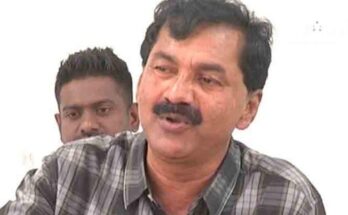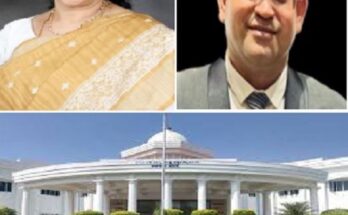Some people advised Gandhiji not to attend the convention held in Belgaum in 1924, however Gangadharrao Deshpande wanted Gandhiji to attend the convention to give a new impetus to the freedom struggle in Belgaum area. In 1924 in Belgaum. Veer Soudh is a monument built to commemorate the Congress session held under the chairmanship of Gandhiji.
Mahatma Gandhi first visited Belgaum in 1916. He then came to Belgaum to preside over the Congress Committee session of 1924. A plaque on the railway station premises before Veer Soudh when the country’s freedom struggle had reached its climax. There is a record of Gandhiji’s visits to Belgaum at that time. The Bombay Provincial Conference was held at Belgaum from 29 April 1916 to 1 May. At that time, Gandhi supported the compromise resolution between the political parties of the country as per the amendment in Article 20 of the Congress Constitution of 1915.
Then on 30 April 1916 M. Gandhiji had given a speech on ‘Depressed Classes of the Country’ in Belgaum. He left Ahmedabad for Belgaum on 18 December 1924 and reached Belgaum on 20 December. Then on December 21, he responded to his reception by the Belgaum Municipal and District Board. AICC in Belgaum. It set up its internal subject committee under Gandhiji’s chairmanship and set up a 16-member sub-committee to draft the E3 for ratifying the Calcutta Pact. At the subject committee meeting in Belgaum, Gandhiji appealed to have faith in the Swarajists who would not change their stance. The next day on December 26, the 39th session of the Indian National Congress began under the presidency of Mahatma Gandhi. On this occasion, in his presidential speech, Gandhiji expressed his thoughts on ratifying the Calcutta Agreement.
Belgaum also has a Gandhi memorial next to Shivaji Udyan on Shyama Prasad Mukherjee Road. In 1937, Mahatma Gandhi 25 km from Belgaum. I. Stayed for a week in the distant village of Hudli. At that time leaders like Sardar Vallabhbhai Patel, Sarojini Naidu, Rajendra Prasad, Khan Abdul Ghaffar Khan and Kasturba Gandhi also came to Hudli along with Gandhiji.
Inspired by the Gandhian ideology of self-reliance, the residents of Hudli have taken the Khadi industry to a different level today. Karnataka freedom fighter Kesari Gangadhar Rao Deshpande brought Gandhiji to Hudli and the village was converted into a Khadi village. Since then the village has gained momentum in Khadi production. At that time, a bullock cart was arranged at Suldhal railway station to bring Gandhiji. But rejecting that facility, Mahatma Gandhi along with his followers walked from Suldhal to Hudali.
Khadi Village Industries Producers Union (KGUS) was established in Hudli in 1954. Earlier in 1927 Gandhian Gangadhar Rao Deshpande had started a Khadi center at Kumari Ashram near Hudli. which was the first khadi center in Karnataka. For this, Deshpande was given the title of ‘Khadi Bhagirath of Karnataka’. During that time, Gangadharrao Gadgil went from village to village and spread awareness about the Khadi movement. His work was continued by Pundlikji Katgade. Raksha Mugutkhan of Mahatma Gandhi is buried in Hubli.



